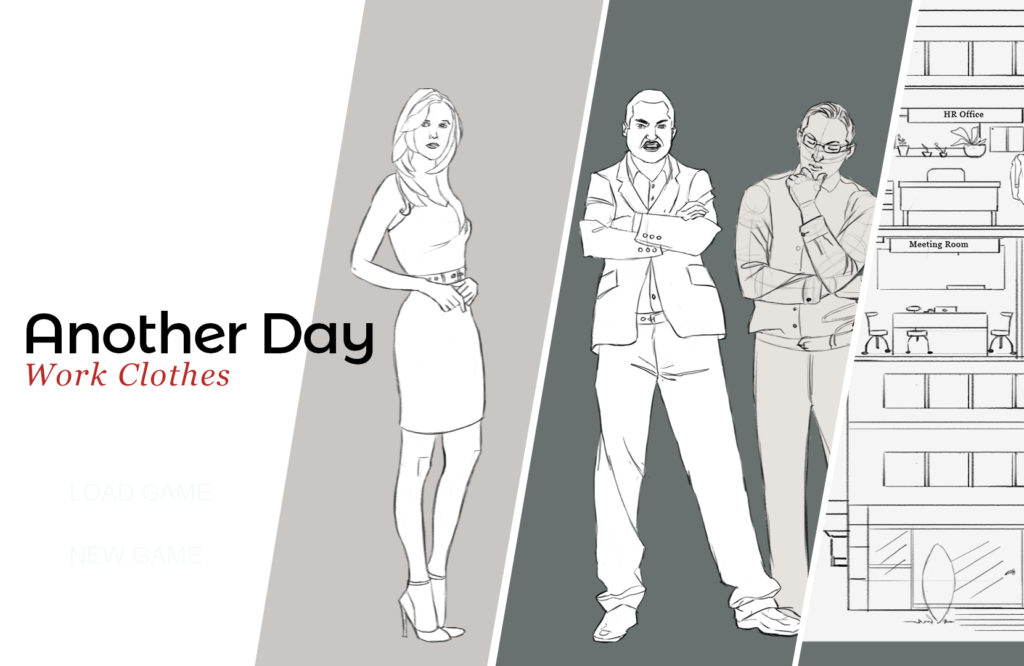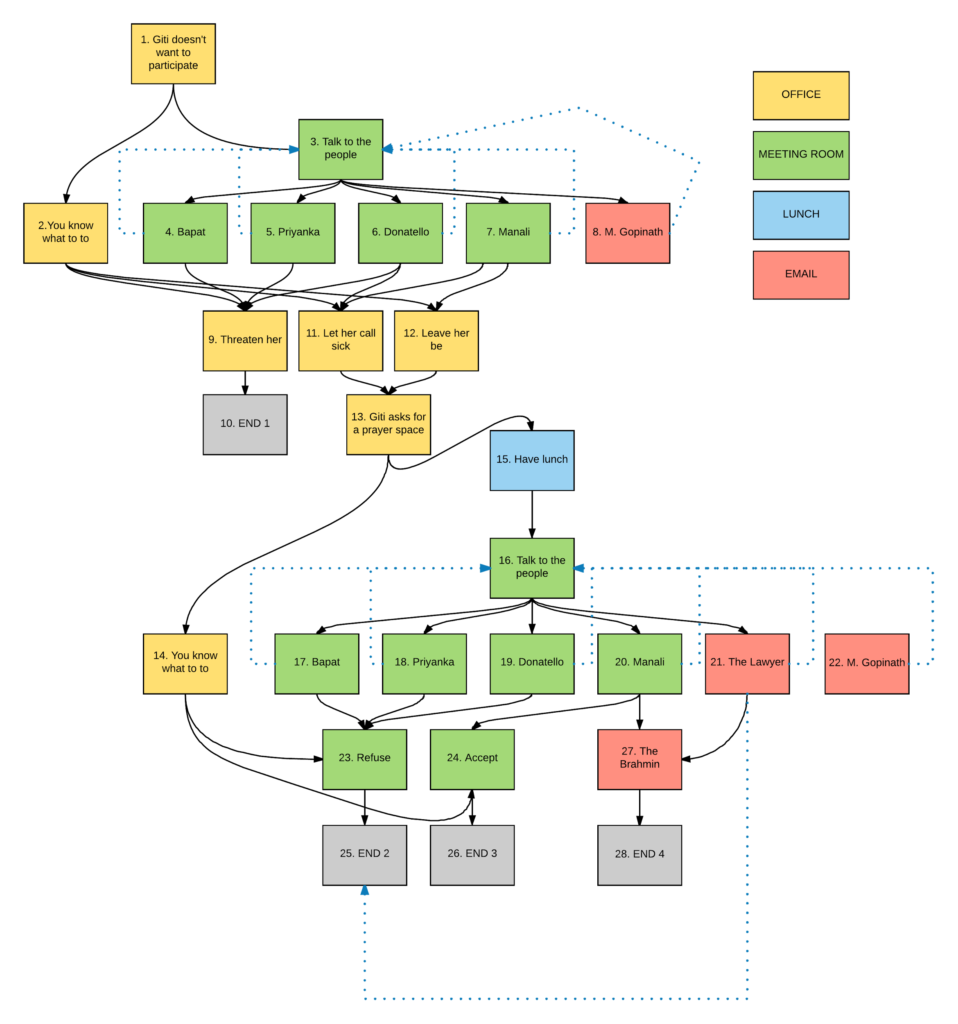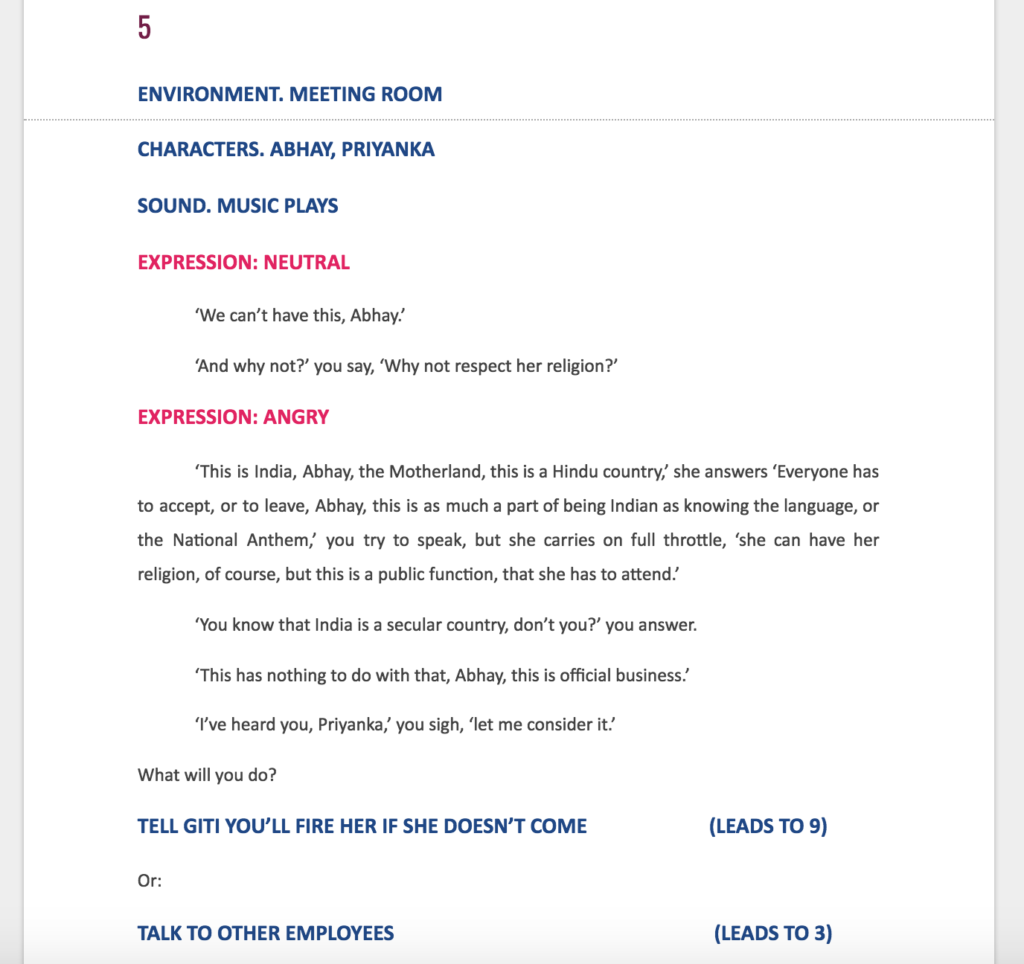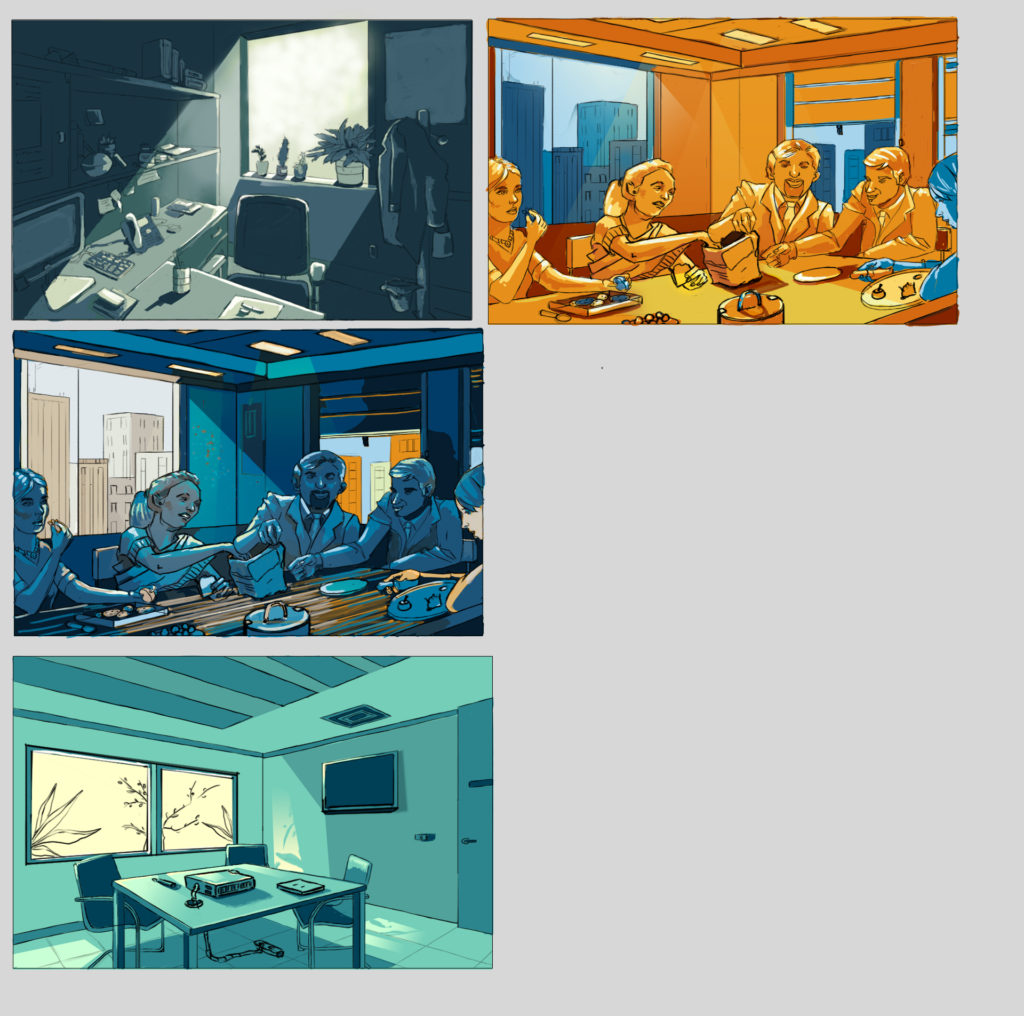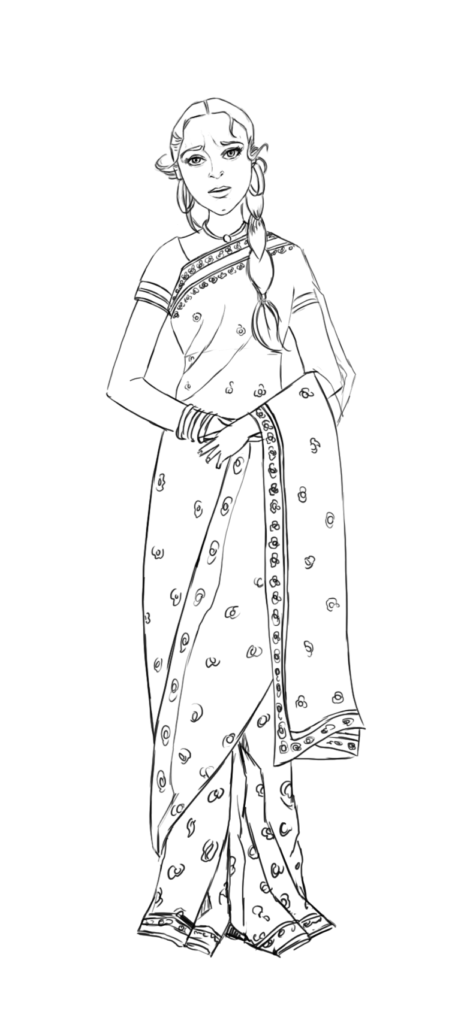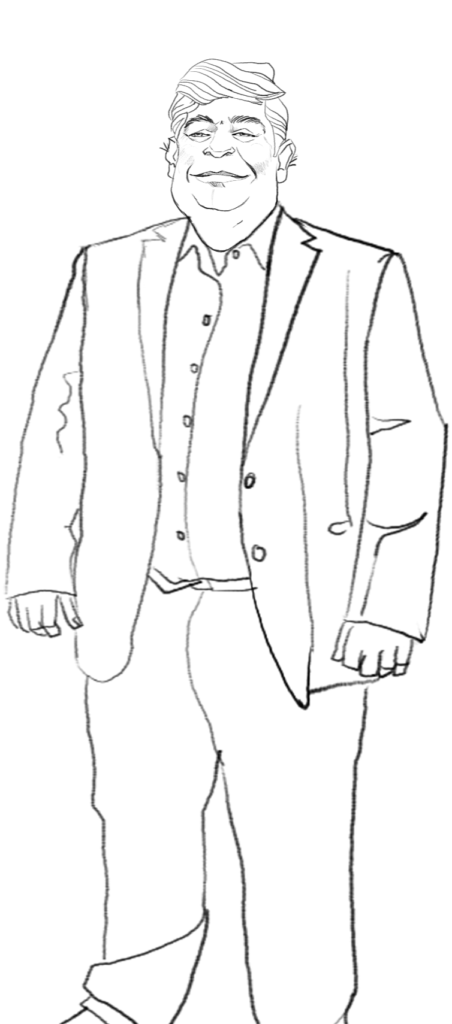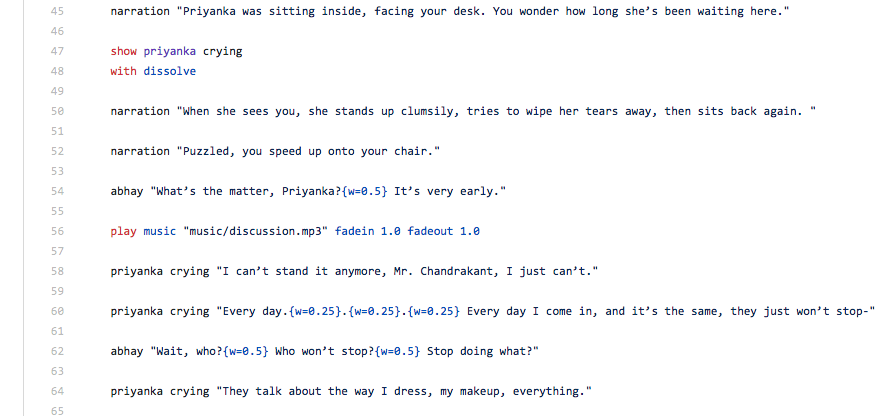Another Day is a visual novel exploring diversity and inclusivity in the workplace. In Another Day, the player is a HR director at a company in Delhi. They must make ethical decisions in order to maintain a productive and inclusive atmosphere within their workplace. These decisions must balance the desires and fears of employees that differ on issues around sexual orientation, clothes, religion, food, etc.
Another Day is played ahead of and between workshops in order to sensitive players to common issues and arguments that come from embracing a diverse workforce. There are also role playing exercises that use characters from Another Day as a way to work through workplace conflict.
Another Day is available on GitHub.
History
Version 1
As described in the blog post accompanying the release of the first prototype, Leila began by looking for the mediator role in company. “In every company, the human resource director embodies this role. For me, it was obvious that the player should take this position and then make some moral decisions. These decisions would have an impact on the well-being of the one who is concerned, all the employees of the company, and the company itself.
“Taking account of all these elements was making the player’s decisions more difficult. Indeed, on the one hand he has the person who feel bad in the company, and in the other hand he has all the other employees.”
The first version was developed solely with text, using the Twine engine, as 4 independent stories. The code is available on GitHub, and you can play online as well.
Version 2
Players felt that they learned a lot about diversity through playing Another Day. However, the game was not engaging them enough. For this reason, we decided to enrich the game through graphics and music.
Rather than taking on all 4 stories from the original prototype, we decided to make a test for just one of them, about clothes. In the story, a young woman named Neha is hired. The other employees on her team, who are older men, are offended by her choice of clothing. As the HR director, the player tries to resolve the situation.
In the interest of time, we didn’t color in the graphics, but already having drawings, including different expressions for different characters, made a huge difference. It also made us approach the storytelling differently, because we didn’t have to describe a characters reactions through words, only through speech.
In addition, we added a soundtrack to this story. You can read about how the soundtrack was created in this blog post by Liburn. As he describes:
“After listening and analyzing several works from Ravi Shankar and other Classical Indian musicians i worked on creating a varied palette of possibilities with the styles I mentioned above that could create a blend a repetitive atmosphere representing the office with a richness in orchestration that wouldn’t necessarily be thought of in an office setting representing each different character and mood.
“While its still a process of work I took this standpoint so the project can have a range of choices and variations within a specific modern, traditional Indian, minimal, setting.”
You can also listen to tracks with names starting with “Another Day” below:
You can play this version of Another Day online, and find the code on GitHub.
Version 3
Version 2 tested very well, with everyone citing the graphics as a big improvement in engagement. For the next version, we wanted to rework the stories as well as add more polished graphics and ambient music.
To improve the story, we worked with Patrice Crespy, a professional narrative designer who had spent several years teaching game writing in Pune. While we kept the subject of the original chapters intact, he was able to add more variety and depth to the characters, as well as a sense of mystery that keeps the reader interested in the story. In addition to the four main chapters, we added a fifth and final chapter that recaps the decisions made by the player and rewards or punishes them within the story world. The player can replay a chapter as many times as she wants in order to find the best possible conclusion.
Here you can see how we visualized tje story structure for chapter 4 of Another Day. These story structures were created for each of the chapters.
Part of the script for the same chapter. The script indicates the characters in the scene, the expressions they put on, and the music (when there are changes). At the end of each section there are the choices that lead to other sections.
Patrice also created a “Character Black Book”, describing the characters in Another Day and how they interact throughout the chapters:
During the script writing process, we paid attention to keeping the number of characters and backgrounds low, to allow Radhika to spend enough time creating the graphic assets. Here are some examples of the backgrounds during the coloring process:
She created the characters as line drawings and then colored in later to match the backgrounds:
After experimenting with different visual novel game engines, we decided on Ren’Py. Although Ren’Py does not export natively to the web like Tyrano Builder, which we used for the previous prototype, it does generate Android applications- our target platform. Furthermore, the syntax matches what you would expect for a script, and can be easily shared using version control like git.
That said, not everything was straightforward. Aymeric put a lot of attention into making custom menus and animations, which are not as easy to code as the speech portions.
Finally, we made a second pass over the music. Although they enjoyed it on its own, players still found the music from the previous version too distracting when trying to read the text. Luckily, Liburn had proposed a wide selection of clips, from which we chose just those that were the least distracting (slower, little to no drums, no high melodies, etc). He then reworked those to create a “palette” of emotions that we placed into the script at key moments.
Credits
Another Day was originally created by Leila Satsou, with help from Gayathri Gopalakrishnan.
The current version was created by Patrice Crespy (narrative design), Radhika Beaume (graphic design), Aymeric Faucher (programming), Liburn Jupolli (music), and Jesse Himmelstein (direction).

